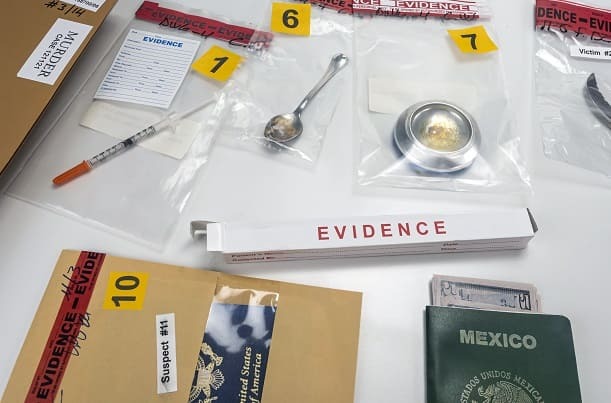
 Data Structure
Data Structure Networking
Networking RDBMS
RDBMS Operating System
Operating System Java
Java MS Excel
MS Excel iOS
iOS HTML
HTML CSS
CSS Android
Android Python
Python C Programming
C Programming C++
C++ C#
C# MongoDB
MongoDB MySQL
MySQL Javascript
Javascript PHP
PHP
- Selected Reading
- UPSC IAS Exams Notes
- Developer's Best Practices
- Questions and Answers
- Effective Resume Writing
- HR Interview Questions
- Computer Glossary
- Who is Who
What is the full form of CID?
Introduction
Crime Investigation Department (CID) is a branch department of the State Police Services in India. It was established in 1902 by the British Government following the recommendation of Police Commissioners which was based on the CID of British Police Forces. Its main function is to investigate, evaluate and scrutinize the most complicated cases of the state.

It has several wings working under it like Crime Branch, Finger Print Bureau, Anti- Narcotics, Anti-Human Trafficking & Missing Person Wing, and Anti-Terror Squad. Out of all, Crime Branch is a special CID wing headed by the ADGP (Additional Director General of Police) and assisted by the IGP or Inspector General of Police.
Jurisdiction and Functionality
The jurisdiction of CID is limited to a state only since it is working under State Police. The CID works according to the Police Manual of the State in which it is acting. Some of the functions of a CID officer are
Investigate complicated and crucial cases of the state like murder, rape, fraud, etc., and collection of shreds of evidence for prosecution and conviction.
Conducts research and develops theories for reporting a particular case.
Prevention of illegal drug usage and distribution.
Checking of explosives, narcotics, and anti-sabotage measures.
Maintaining data and updating criminal information systems.
Giving information on behalf of the State to Parliament and Assemblies
Coordinate related cases with other states
Conduct raids and rescue operations as per the law
Organizational Structure
The organizational structure of the Crime Investigation Department may vary from state to state having more or less similar sub-divisions. It has branches at all the district levels of that particular state. Some of the branches included under CID are
State Crime Record Bureau (SCRB)
Crime Branch (CB-CID)
For Law and Research: Narcotics Branch, Interpol Branch, Statistical Branch, Gazette & Library, and some other cells
For Technical Services: Finger Print Bureau, Documentation & Photography Bureau, Computer Branch, and Dogs Training Branch.
The hierarchy in the ranks of officers from bottom to top is Sub-Inspector (SI), Inspector, Superintendent (SP), Additional Director General of Police (ADGP), and Inspector General of Police (IGP). The officers often use ?detective' in their title names.
Challenges and Limitations
Being a Crime Investigating Officer of CID, a person has to give his blood and sweat to serve his country. While dealing with complex cases, CID has to face certain challenges and limitations. It always has a risk of losing officers due to life-threatening circumstances faced during cases.

They are constantly working in a stressful environment and always have a risk of harm. Injuries and illness are common for the officers. They had to work extra hours to fulfill the responsibility. Since their jurisdiction is limited to a state, sometimes it becomes difficult to handle a case involving other states. They may not coordinate and cooperate with the CID. The work and investigation done by CID should always abide by the law.
Conclusion
Crime Investigation Department (CID) is an important department of the Police Department which aids in giving justice to the victim and solving cases with an exhaustive investigation, collecting evidence, and arresting the criminals of complex cases. The work of this department is mostly behind the scene work. It is as essential as any other department for maintaining law and order, crime-criminal data, preventing terror activities, human trafficking, drug abuse, etc. The police department of a state is incomplete without a Crime Investigation Department.
FAQs
Q1. How is CID different from CBI?
Ans: Crime Investigation Department (CID) works in a state only under a State Police Service, its jurisdiction is limited to it only while the Central Bureau of Investigation (CBI) works at the national and international level cases, and its jurisdiction is the entire country.
Q2. Where do the cases reported by CID go?
Ans: The cases dealt with by CID go to the High Court of the state in which it is working and to its State Government whereas CBI cases go to any state government, the Supreme Court, and Union Government.
Q3. Who are Paralegals?
Ans: Paralegals are the officers who examine the facts and laws of a case to understand the cause of actions behind the crime and make preparations according to it the case. They may work for courts, legal teams, lawyers, or law firms.

